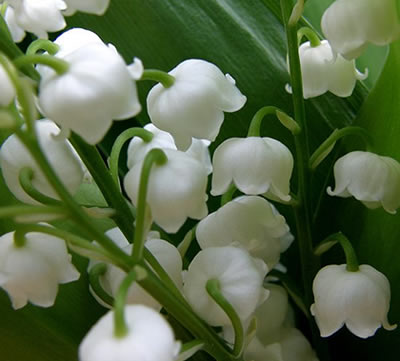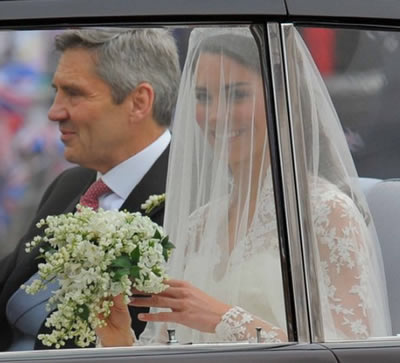
Common name: Lily of the valley, May lily, May bells
Botanical Names: Convallaria Majalis
Origin: Northern Hemisphere, Asia and Europe
Colours: white and more rarely pink
Lily of the valley is also known as May lily which comes from the Latin convallis meaning valley and majalis for May-flowering. It is said to symbolise purity, humility and the return of happiness. It has long been associated with May and is said to bring good luck or protect your garden from evil spirits. Lily of the valley has been the national flower of Finland since 1967.
This pretty plant is a herbaceous perennial that spreads it’s rhizomes (roots) underground to form extensive colonies. It grows up to 20cm in height and has tiny bell shaped flowers up to 10mm in diameter. The flowers have a beautiful sweet fragrance. The plants offer good ground cover and thrive in shady areas. Although after several years they can take over large areas or other plants if not divided and kept on top of. All parts of the plant are poisonous including the berries.
The herb is used medicinally for various conditions. In the First World War it was used to treat victims of mustard gas to lower blood pressure. It contains cardiac glycosides which are used to treat heart problems. The roots of the plants are used by herbalists to make an ointment that treats burns. It should only be used by a qualified medical practitioner as the side effect can be harmful if used incorrectly.

In floristry Lily of the valley is used predominately in wedding work, as it’s petite stems are not long enough for normal bouquets and it is one of the dearer flowers. It’s main season is March to May as a cut flower. It is available in some other months, but it is usually more expensive out of season. It’s delicate flowers look beautiful in hand tied bouquets or shower bouquets, and it’s sweet fragrance has a gorgeous old fashioned quality. The delicate flowers are so petite a vast number are needed for bridal bouquets of only lily of the valley. It also works well mixed with roses for an elegant vintage look.


